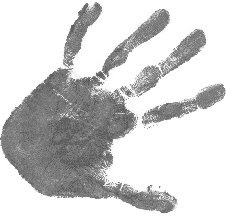Bandaids & Purple Hearts
George Washington must be spinning in his grave like Linda Blair above the bed.
The requirements to receive a Purple Heart are clearly delineated. An example of an injury not worthy of a Purple Heart is found in paragraph (b)(5)(h) - "Self-inflicted wounds, except when in the heat of battle, and not involving gross negligence," while one deserving is found in paragraph 5(a) - "Injury caused by enemy bullet, shrapnel, or other projectile created by enemy action."
Paragraph (b)(6)(c) is also instructive - "Individuals injured as a result of their own negligence; for example, driving or walking through an unauthorized area known to have been mined or placed off limits or searching for or picking up unexploded munitions as war souvenirs, will not be awarded the Purple Heart as they clearly were not injured as a result of enemy action, but rather by their own negligence."
A wound is defined in (b)(2) - "A wound is defined as an injury to any part of the body from an outside force or agent sustained under one or more of the conditions listed above. A physical lesion is not required, however, the wound for which the award is made must have required treatment by a medical officer and records of medical treatment for wounds or injuries received in action must have been made a matter of official record."
That brings us to the doctor who treated Kerry and as a result of which Kerry received a Purple Heart.
"I have a very clear memory of an incident which occurred while I was the Medical Officer at Naval Support Facility, Cam Ranh Bay.
"John Kerry was a (jg), the OinC or skipper of a Swift boat, newly arrived in Vietnam. On the night of December 2, he was on patrol north of Cam Ranh, up near Nha Trang area. The next day he came to sick bay, the medical facility, for treatment of a wound that had occurred that night.
"The story he told was different from what his crewmen had to say about that night. According to Kerry, they had been engaged in a fire fight, receiving small arms fire from on shore. He said that his injury resulted from this enemy action.
"Some of his crew confided that they did not receive any fire from shore, but that Kerry had fired a mortar round at close range to some rocks on shore. The crewman thought that the injury was caused by a fragment ricocheting from that mortar round when it struck the rocks.
"That seemed to fit the injury which I treated.
"What I saw was a small piece of metal sticking very superficially in the skin of Kerry's arm. The metal fragment measured about 1 cm. in length and was about 2 or 3 mm in diameter. It certainly did not look like a round from a rifle.
"I simply removed the piece of metal by lifting it out of the skin with forceps. I doubt that it penetrated more than 3 or 4 mm. It did not require probing to find it, did not require any anesthesia to remove it, and did not require any sutures to close the wound.
"The wound was covered with a bandaid.
"Not [sic] other injuries were reported and I do not recall that there was any reported damage to the boat."
Kerry went in the next day. His story was different form his crewmates. His "wound" was consistent with an ill-advised launching - by Kerry - of a mortar round into a mound of rocks. The shrapnel was one centimeter long (about 0.39 inches) and 2 to 3 millimeters in diameter (about 0.04 inches). It rested about 1/10 of an inch into his skin. He got a bandaid.
This shows leadership? This is courage under fire? A whiner with a pedigree.
Wednesday, May 5, 2004
Subscribe to:
Post Comments (Atom)














No comments:
Post a Comment